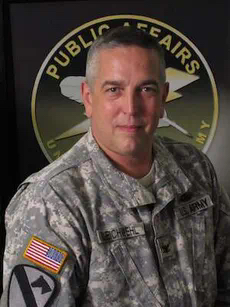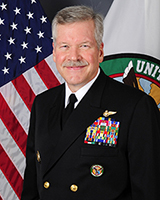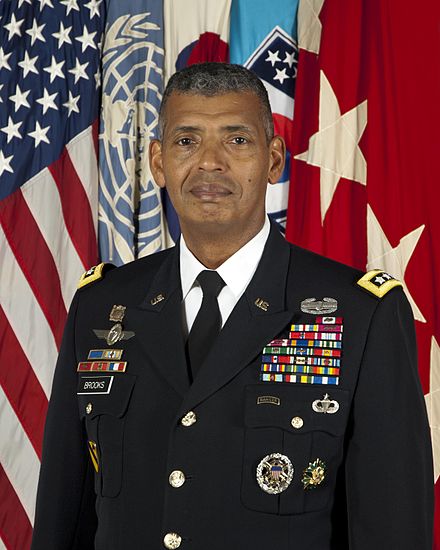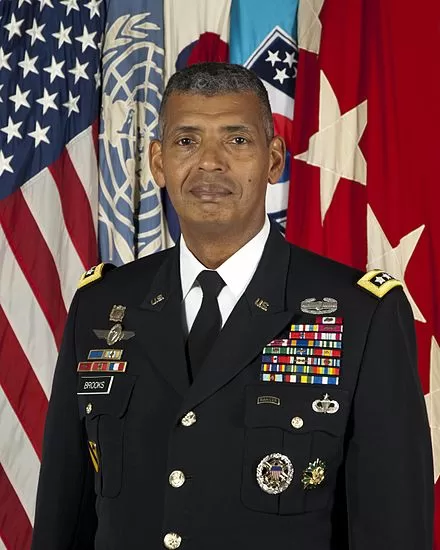A year after the deaths of Reuters news crew Namir Noor-Eldeen and Saeed Chmagh in Baghdad, the U.S. Military was still ignoring the Freedom on Information FIOA requests for the helicopter video that Brigadier-General Vincent Brooks and Vice-Admiral Mark Fox had shown edited segments, less than three minutes, to Reuters editors on 25 July, 2007.
One year of silence from the military was enough for Reuters Iraq bureau chief Dean Yates to change the ‘off the record’ briefing given that day to being well and truly ‘on the record’ by publicly called for the video of the killing of Reuters staff. His staff. Real people.
This is Page 5 of our investigation into the death of Reuters cameramen in Iraq and the Wikileaks Collateral Murder leak. The series starts here and covers The General & The CIA Director & Secretary of State.
Reuters Iraq bureau chief Dean Yates decided that the ‘off the record’ briefing given that day was now ‘on the record’ and publicly called for the video.
Reuters seeks US army video of staff killed in Iraq
Reuters seeks US army video of staff killed in Iraq by Dean Yates, first published 11 July, 2008
BAGHDAD, July 11 (Reuters) – Reuters has urged the U.S. military to hand over video footage from U.S. attack helicopters and other materials relating to the killing of two Iraqi staff in Baghdad a year ago.
The U.S. military said the helicopter attack, in which nine other people were killed, occurred after security forces came under fire.
Video of the incident from two U.S. Apache helicopters and photographs taken of the scene were shown to Reuters editors in Baghdad on July 25, 2007 in an off-the-record briefing.
U.S. military officers who presented the materials said Reuters had to make a request under the Freedom of Information Act (FOIA) to get copies. This request was made the same day.
“It has now been approximately one year since our original request was submitted and we still have not received a formal response or written initial determination in accordance with FOIA’s statutory requirements,” Reuters News Chief Counsel Thomas Kim wrote in a letter to the U.S. Central Command.
Reuters wants all the materials to be able to study closely what happened. Access to the video could also help improve Reuters’ safety policies in Iraq, the world’s most dangerous country for journalists.
Published 11 July, updated 12 July, 2008 as Reuters seeks US army video of staff killed in Iraq by Dean Yates
The Freedom of Information Act requests by Reuters for the helicopter footage and documents relating into the incident were ignored.
Reuters chief counsel Thomas Kim was still trying to get information from the U.S. military in 2009 …
Soon after the shootings, Reuters submitted a request under the Freedom of Information Act for all documents and materials about the incident, Kim said. In April, the U.S. Central Command, which oversees the U.S. military in Iraq, said it had identified eight documents but was withholding two because they were classified and released six others in redacted form, with classified portions blacked out.
Reuters appealed in June, saying the information the military released was incomplete, challenging the decision to classify it and asking for an expedited decision. In July, the Pentagon rejected the request to expedite the appeal, Kim said. He said one of the documents released contains grainy photographs that appear to be captured from a helicopter video, which Reuters is seeking to obtain.
“It’s difficult to understand whether the investigation is coming to sound conclusions without actually seeing the evidence,” he said. “It is hard to make heads or tails out of the screen grabs from the video, so we would like to see the video . . . the actual unedited version of what happened on the scene.”
Frank Smyth, the journalist security coordinator for the CPJ, said the U.S. military has not made public several other investigations involving the deaths of journalists killed by U.S. forces, and said that more transparency is important both for accountability and for preventing such incidents in the future.
“This case is one of quite a few, more than 10 at least, where journalists have been killed by U.S. fire in Iraq and it has not been investigated in a public way,” Smyth said. “Once we have information, judgments can be made on whether they were justified.”
Pentagon spokesman Bryan Whitman said U.S military personnel have repeatedly met with news managers in recent years to discuss safety issues, and U.S. commanders also have taken measures to remind troops of the presence of reporters on the battlefield. “We think the safest way to cover these operations is to be embedded with U.S. forces,” he said.
Military’s Killing of 2 Journalists in Iraq Detailed in New Book by Washington Post reporter David Finkel in his book called “The Good Soldiers”






Colonel Scott R. Bleichwehl, who had a Master’s Degree in Mass Communications a long career in military media management said “There is no question that coalition forces were clearly engaged in combat operations against a hostile force”
General Vincent K. Brooks (Ret.) often briefed the media in Iraq. He told Reuters editors that because some of the men were armed, the group was deemed to be expressing “hostile intent” and so, under the U.S. military’s rules of engagement, they could be fired upon.
Rear Admiral Mark Fox told Reuters that access to combat gun camera tapes could only be granted via the Freedom of Information Act process. Reuters’ FOI requests and their repeated follow up enquiries were ignored by the U.S. military.
As far as the U.S. military was concerned the matter was closed. The deaths of Namir Noor-Eldeen, Saeed Chmagh, and ten other people with them, occurred during a battle with hostile insurgents.
They were just another statistic amongst the hundreds of thousands of civilians killed in Iraq during a U.S-led invasion based on the pretext that Saddam Hussein had Weapons of Mass Destruction (WMD). Just two days before the 2003 invasion of Iraq, a UN inspection team had declared it had found absolutely no evidence of the existence of WMDs and they were ordered to leave Iraq by U.S. President George W. Bush. The whole war was based on lies.
Then, on 5 April 2010 at the National Press Club in Washington, Julian Assange, publisher of Wikileaks, released the video taken from the Apache helicopter ‘Crazy Horse 1-8’ which he called Collateral Murder.
Then, everything changed. The story continues …
4. After the 25Jul meeting. U.S. Military ignored FIO requests by Reuters for footage of deaths of their staff in Iraq.
Link for FOIA documents on July 2007 New Baghdad Combat Action
By PRESS RELEASE | April 7, 2010, U.S. Central Command … the link is dead, the Press Release has been removed. It has also been removed from Central Command’s Archive.
The Wayback Machine is unable to access the press release …


ACLU Files Lawsuit to Require Department of Defense to Comply With FOIA Request on Human Costs of War
SEPTEMBER 4, 2007 FOR IMMEDIATE RELEASE
NEW YORK – The American Civil Liberties Union is filing a lawsuit today against the Department of Defense (DoD), demanding that it comply with a Freedom of Information Act request to release documents regarding civilians killed by coalition forces in Iraq and Afghanistan.
“There can be no more important decision in a democracy than whether to go to war, yet this administration has gone to unprecedented lengths to control the information that the American people need to make informed judgments,” said Ben Wizner, an attorney in ACLU’s National Security Project. “The government’s refusal to comply with the ACLU’s FOIA request unlawfully obstructs the public’s right to know the true costs of our nation’s wars.”
The ACLU sought records from several components of DoD more than a year ago, but has received documents only from the Department of the Army. The Army has provided thousands of pages of documents chronicling civilian casualties in Iraq and Afghanistan. Those documents include new evidence of coalition forces’ involvement in civilian casualties in Iraq and Afghanistan. The nearly 10,000 pages that the ACLU is making public today include courts martial proceedings and military investigations regarding the possible wrongful death of civilians. The documents released by the ACLU are available online in a searchable database at www.aclu.org/natsec/foia/log2.html
“The secrecy that surrounds the human costs of these wars keeps Americans from knowing what is being done in our name,” said Nasrina Bargzie, an attorney in ACLU’s National Security Project. “When the exigencies of war and the Pentagon’s policies interfere with the free flow of information, we must rely on our own government’s documents and records to help Americans make informed decisions.”
Since U.S. troops first set foot in Afghanistan in 2001, the Defense Department has gone to unprecedented lengths to control and suppress information about the human costs of war.
The ACLU pointed out that during both the wars in Afghanistan and Iraq, the Defense Department has instituted numerous policies designed to control information about the human costs of war. These policies include:
- Banning photographers on U.S. military bases from covering the arrival of caskets containing the remains of U.S. soldiers killed overseas;
- Paying Iraqi journalists to write positive accounts of the U.S. war effort;
- Inviting U.S. journalists to “embed” with military units but requiring them to submit their stories for pre-publication review;
- Erasing journalists’ footage of civilian deaths in Afghanistan; and
- Refusing to disclose statistics on civilian casualties.
The files made public cast further light on the killings of Iraqi and Afghan civilians in the conflict zones. One file describes the court martial proceeding of a U.S. soldier who shot an Iraqi man at close range in the head. The Iraqi man had been taken prisoner after a battle. Prior to the shooting, the solider had told another soldier that he wanted to shoot the prisoner. The other soldier told him not to, but minutes later heard the shot. After hearing testimony from many of the soldiers involved in the incident, an Army Investigating Officer recommended that a general courts martial be convened and noted:
“One issue that was highlighted during the hearing was the testifying Soldier’s general lack of understanding, knowledge, and training on the treatment of enemy prisoners, Rules of Engagement (ROE), and use of force. Although, most Soldiers testified that they received some prisoner handling training prior to deployment in either a classroom briefing setting or a classroom briefing followed by hands on training, the majority of the Soldiers who testified seem to be uncomfortable on how they were to search and then secure enemy prisoners . . . . I do not believe any one soldier could articulate the same understanding of the ROE and use of force guidance. I recommend that additionally [sic] training be conducted for both units on prisoner handling, ROE, and use of force. The soldier was tried by court martial and acquitted by a jury of officers and enlisted men.
Another file describes an investigation of the killing of two Afghan men that was prompted by a report in the New York Times. U.S. soldiers allegedly shot and killed two fleeing villagers. While noting that the investigators had declined to exhume the bodies or obtain a copy of the Afghan police report on the incident, the investigation concluded that there was “insufficient evidence to prove if [four Special Forces soldiers] committed the offense of Murder.”
Yet another file describes an investigation of a riot at a U.S. interment facility at Camp Bucca, Iraq, evidently related to claims that U.S. personnel had defaced the Qur’an. At least four Iraqi prisoners were shot and killed by Coalition Forces during the disturbance.
One of the few files in which an investigation recommended disciplinary action involved the death of a six-month old child who died in a traffic accident. The file determined that the U.S. driver should be charged with negligent homicide and reckless endangerment.
The lawsuit was filed in United States District Court for the District of Columbia. Attorneys on the FOIA project are Wizner, Bargzie, and Jameel Jaffer of the national ACLU, and Art Spitzer of the ACLU of the National Capital Area.
For more information on the ACLU’s efforts to obtain information on the human costs of war in Iraq and Afghanistan go to www.aclu.org/civiliancasualties
In a separate project, the ACLU filed a FOIA request in October 2003 for records concerning the abuse of prisoners held by U.S. forces in Iraq, Afghanistan, and Guantánamo Bay. To date, that request has resulted in the release of more than 100,000 pages, all of which are available online at: www.aclu.org/torturefoia. Litigation regarding that FOIA request is ongoing.
This is Page 5 of our investigation into the death of Reuters cameramen in Iraq and the Wikileaks Collateral Murder leak. Our ten page investigation into the death of Reuters camera crew in Iraq.
1 The trial of Julian Assange exposes US Rules of Engagement
2 US Military killed two Reuters photographers in Iraq
3 The fix is in: Military investigation into deaths of Reuters staff in Iraq
4 Generals Brookes & Fox meet the Reuters editors
5 Military ignored FOI requests for video of deaths
6 Rules of Engagement between military & civilians
7 Assange: WikiLeaks release Collateral Murder video
8 Definitions, Resources, Transcripts, Apache details
9 Who, what, when and why of the Assange case
10 Wikileaks Collateral Murder video aftermath. Where are they now?
A quick update on the Julian Assange story







